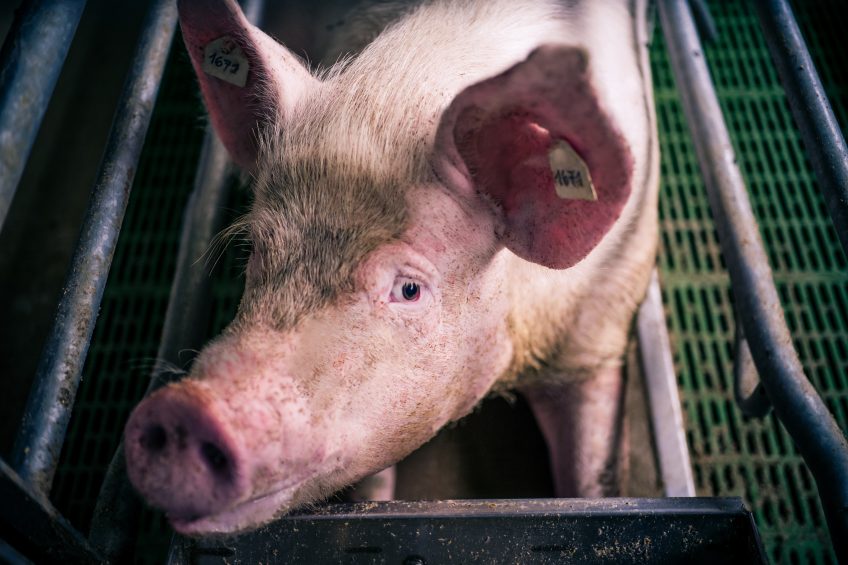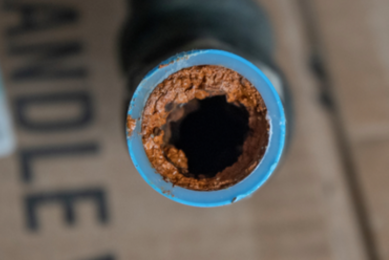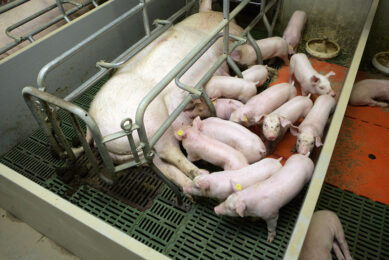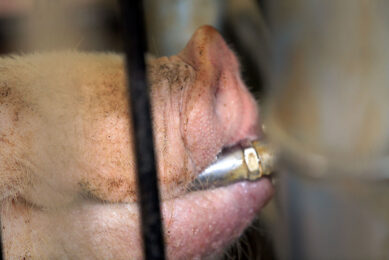The most effective disinfectant on pig farms

Disinfection on pig farm: who needs it? The simple answer is you do!
Cleaning and disinfecting is imperative to maintain wellbeing and health of production animals, especially in intensive modern housing where high density and high productivity increases the infection pressure. Thorough cleaning and adapted disinfection allow to decrease the pathogens level and to prevent or to break the disease cycle.
The myth of the ideal disinfectant…
The ideal disinfectant has a spectrum adapted to the target, is fast-acting and has a sufficient efficiency within the contact time. An ideal disinfectant remains active in presence of organic matter, has a good material compatibility and has no or low toxicity for users. In addition, an ideal disinfectant has an acceptable eco toxicity and an easy protocol of application.
Iodine, chlorine, glutaraldehyde, phenolic or quaternary ammoniums compounds…None of these raw materials is responding to all these parameters. Thus synergy is required: a mutually advantageous conjunction of distinct elements allow to be closer to the ‘myth of the ideal disinfectant’.
Complex formulations, with several active substances, containing also stabilisers, sequestering agents, buffering agents, offer the best compromise. Together with the chemical properties of the disinfectant, the method of application is a key factor to obtain good results.
To guarantee a good activity of the disinfectant, following directions of use is essential.
On the label, you can find the description of the biocidal activity, the amount of active substances, the mode of application and the danger classification of the product. On the Safety Data Sheet you can find the danger classification of the product, how to handle the product in a safe way for the user and the environment and the risk management measures that should be taken when using the biocidal product.
… and the reality of specific situations
A disinfectant is composed of one or more chemicals. These chemicals react with organisms and organic matter (soils). In reacting, the chemicals are consumed. Rough, porous surfaces are harder to disinfect than smooth surfaces. Porous surfaces are also harder to clean than smooth surfaces. Porous surfaces will therefore have heavier soil loads after cleaning, which further increases the difficulty of disinfection.
On a pig farm, sources of contamination are the environment, the material used at the farm, the farmer and the animals themselves. Several disinfectants are used on pig farms at different frequencies and different applications.
The choice is made according to the answers given to the following questions:
- Against which germs am I disinfecting? Know your enemy before the fight
- Where and which surfaces have to be disinfected? The disinfectant should be adapted to the surface to be disinfected and to the level of organic matter
- How and how often should I disinfect?
By answering these questions, the adapted disinfectant is selected.
Where to use a disinfectant on a pig farm?
Housing hygiene
The aim of an efficient cleaning and disinfection protocol of a pig house is to decrease the infection pressure in general. The reduction of bacteria in the immediate surroundings must reduce the opportunity for bacteria to gain access to the animals. Remove all organic matter and equipment before soaking and cleaning. A broad-spectrum disinfectant, such as Virocid should be used afterwards. This video on the CID Lines YouTube channel to see how a pig house should be cleaned and disinfect.
People hygiene
Hand hygiene
As farmers hands are directly in contact with the animal and the equipment, hand hygiene is directly involved in pathogen transmission. A standard recommendation is to wash your hands before entering the pig house and when you leave the stables to avoid the circulation of germs. Use a cleaning and decontaminating soap, such as Kenoderm and disinfect afterwards with Kenosept G, a disinfecting alcohol solution.
Boot hygiene
The critical characteristics required from a disinfectant used in a footbath are speed of disinfection and broad spectrum. Disinfectants based on hydrogen peroxide and per acetic acid, such as Kickstart, are ideal for this purpose.
Drinking water hygiene
Water is one of the most important nutrients for a pig so a good water quality is essential to keep your animals healthy. A valuable disinfectant for animal drinking water lines should leave no residues, has to be stable until the end of the drinking water lines and should be safe for the animals. Start with a good cleaning and disinfection of the drinking water lines at sanitary stop by using a disinfectant such as Cid 2000 and afterwards disinfect your drinking water continuously while the animals are in house with for example hydrogen peroxide based product such as Cid Clean.
This article is sponsored by CID Lines











